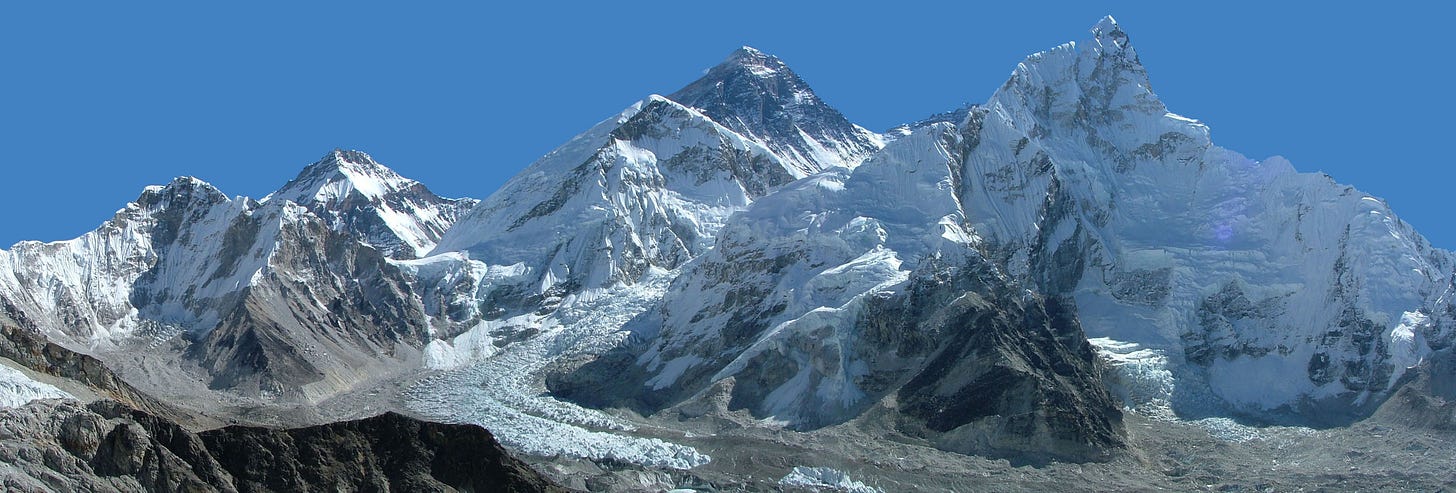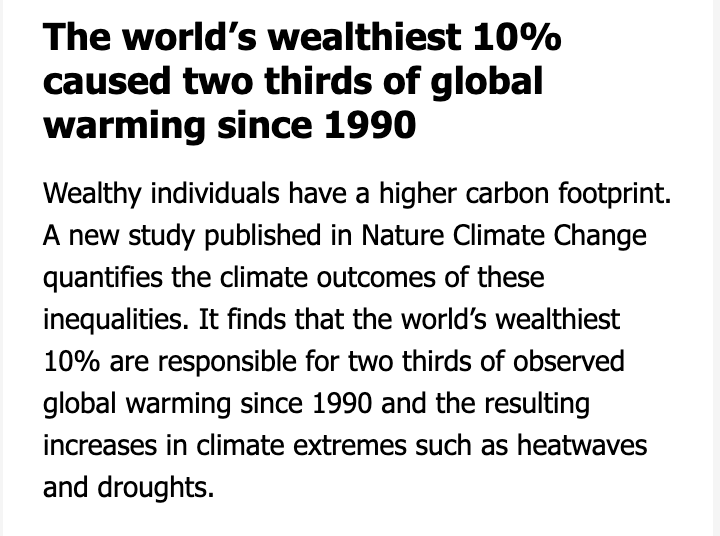Mount Everest Compared to a Single Flea: The Wealth Gap Is Larger Than You Think
If Mount Everest represents Musk's earnings in 2024, then people making $50,000 earned a single flea in comparison. No, the math is not wrong.
CNN recently reported that Elon Musk was just “awarded [a] $29 billion pay package from Tesla.” That’s an outrageous amount of money, but how much is it really? The fact is that our brains aren’t good at comprehending big numbers.
Consider that 1 million seconds is the same as roughly 11 days. What about 1 billion seconds? The answer is 31 years. What about 1 trillion seconds? This equals about 316 centuries. That amount of time would take you back well into the Pleistocene, not long after our Neanderthal ancestors went extinct.
Now reflect on the fact that the top 1% in the US has a combined net worth of around $49 trillion. How does one even begin to wrap their head around this? One way is to break larger numbers down into smaller sums that we do have some intuitive grasp of. For example, $1 million strikes us as much larger than it sounds when one writes it as a sum of:
$100,000 plus $100,000 plus $100,000 plus $100,000 plus $100,000 plus $100,000 plus $100,000 plus $100,000 plus $100,000 plus another $100,000.
Try reading that out-loud right now (if it won’t bother those around you). Doing this makes clear that one million dollars is a huge amount of money. If your yearly expenses are $100,000, then $1 million would cover an entire decade of living.1
Musk Is Much Wealthier than You Think
To make things more concrete, consider that in 2024, Elon Musk brought home a staggering $203 billion. Let’s say that the height of Mount Everest represents this amount of money. Now imagine someone who earned $50,000 in 2024. How tall would their salary stand next to Musk’s Mount Everest of earnings? You might guess “the height of a skyscraper, such as the Burj Khalifa in Dubai,” since Mount Everest is much taller than the Burj Khalifa but the Burj Khalifa is still quite tall.
But that is not even close to accurate.
So, perhaps you reduce your estimate to “the size of a large house,” but this would still be way off. In fact, $50,000 compared to $203 billion amounts to roughly 0.084 inches — about the size of a common flea. Mount Everest compared to a lowly flea. That’s the difference between what you and Musk would have made in one year alone. (Try the math for yourself!)

It was also recently announced that Musk possesses roughly two Mount Everests worth of wealth in total: $405.6 billion. If he were to fall on hard times and lose 90% of this, he’d have a staggering $40 billion left. If his bad luck were to continue, resulting in another 90% loss, he’d have $4 billion.
If he were to then lose another 90% followed by another 90% followed by yet another 90%, he’d still be a multi-millionaire! In other words, Musk could lose 90% of his vast wealth five times in a row — amounting to 99.999% of his current worth — and have $4 million remaining in his wallet. If you make $50,000 each year, $4 million would cover an incredible 80 years of your career.
Alternatively, let’s say that $50,000 equals a single medium grain of rice, which is about 0.22 inches long. This means that if you make $50,000 per year, you are the proud owner of one rice grain. (Hurray!) Musk, in contrast, earned 4,060,000 grains of rice in 2024. If you were to line up Musk’s grains of rice one after another, you could extend them from the southern tip of Manhattan to the most northern point, with plenty of grains to spare. That’s a distance of some 14 miles — compared to your single measly grain. If you made $100,000 in 2024, then congratulations: you’d have two grains of rice. If you made $200,000, then you’d have four grains — still not even an inch. Meanwhile, Musk’s wealth from that one year alone would extend across the entire length of Manhattan.
One last analogy is worth making to drive home the point; this one is temporal rather than spatial. Imagine that Musk’s $203 billion income represents the entire calendar year, from the first seconds of January 1 to the final seconds of December 31. Extending your income of $50,000 into the year, beginning at 12am on January 1, how far would you get? The answer is not even 8 seconds in. Musk’s wealth gets him an entire year, while your wealth would get you a fraction of the first minute. Since there are 31,536,000 seconds in the year, this means that Musk would have 31,535,992 seconds more than you.
Zooming in, one calculation reveals that Musk earns some $554 million every single day. That’s $384,722 every minute and $6,412 each second. If it took you 5 seconds to read the previous two sentences, Musk will have added another $32,060 to his colossal heap of wealth, roughly the same amount of money that 22% of Americans earn per year.
The “Have-Nots” Have So Little
Is there any way to justify this obscene, outlandish, grotesque hoarding of wealth? Right now, nearly 12 million children in the US live in poverty — about 16% of all kids in our country. Ninety-one million Americans are unable to afford health care. Some 18 million Americans can’t pay for the medications that they need. About 500,000 children have lead poisoning, which causes permanent brain damage but can be easily avoided through lead abatement programs.

Widening the lens, 735 million people are malnourished globally, and the number is rising. (That’s “100,000 people” written out 7,350 times in a row.) More than 1 billion human beings live in acute multidimensional poverty, with 712 million in extreme poverty. Two billion people are unable to access safe water, and 150 million are currently homeless. Due to poverty, malnourishment, and starvation, a shocking 25,000 people perish each day from hunger-related illnesses, including more than 10,000 children. That’s over 304,000 dead children every single month and 3,650,000 every year.2
Meanwhile, the wealthiest 1% around the world have captured “nearly two-thirds of all new wealth worth $42 trillion created since 2020,” according to an Oxfam article published in 2023. A more recent report notes that “the richest 1% own almost half of the world's wealth, while the bottom half possess around 0.75%.”3
Here in the US, Donald Trump’s “Big Beautiful Bill” will give those making $4.3 million or more an extra $390,000 each year, while those making $17,000 or less will lose $820. Because the marginal utility of a dollar decreases as one’s wealth increases, the loss of this $820 will be far more catastrophic for poor people than the extra $390,000 will be beneficial for the rich. People earning $17,000 to $51,000 will also see their wealth decline by $430 per year, meaning that everyone making less than $51,000 will suffer while the rich get richer.
This makes my blood boil, given how patently unfair, unjust, and unsustainable it is. People feel this on a visceral level — it’s one reason the Internet erupted in ghoulish applause after UnitedHealthcare CEO Brian Thompson was murdered last year. It’s also partly why “Someone needs to do it” memes and videos have, as Taylor Lorenz reports, spread on social media platforms, where everyone knows exactly what’s being referred to (hint: it involves Trump, who — incidentally — has generated $1.2 billion since the election from his crypto scams).
The Blood of Societal Collapse Is Largely on Their Hands
What do we do? I don’t have a non-obvious answer right now. Perhaps — I say facetiously, or not? — the exploited classes (nearly all of us) should machinate a devious plan to invade the subterranean bunkers that billionaires are building around the world (in New Zealand, Hawaii, etc.), because the elites know full well that their actions are catapulting society over the precipice of collapse.
A recent study in Nature reports that “the world’s wealthiest 10% are responsible for two thirds of observed global warming since 1990 and the resulting increases in climate extremes such as heatwaves and droughts.” Another finds that “the emissions of the richest 1 percent have caused crop losses that could have provided enough calories to feed 14.5 million people a year between 1990 and 2023,” and that “this will rise to 46 million people annually between 2023 and 2050.” The super-rich are destroying our precious little oasis in the universe and, knowing that, they’re looking for ways to escape the dire consequences of their unquenchable avarice.

None of this would be necessary, of course, if the multi-billionaires were to just share their undeserved wealth with the rest of society, a point that my friend Douglas Rushkoff has made repeatedly. Imagine if someone with a Mount Everest’s-worth of annual goods were to give everyone just a single flea’s-worth of money each year — a tiny amount in the grand scheme of things, but not a trivial amount to most people. But no, Musk wouldn’t even follow-through on his pledged to end world hunger after the United Nations provided exactly what he requested: a detailed account of how $6 billion would be spent to save the lives of 42 million of the most disadvantaged people on our planet.
The world doesn’t need to be this way. The gap between how good things could be and how bad they actually are is enormous — and growing. Sadly, the obvious solution is much easier to identify than implement.
Thanks so much for reading and I’ll see you on the other side!
Acknowledgments: Immense thanks to the editor Wes Cowley for checking the calculations in this article. Very much appreciated!
NOTE: This post is part of a larger project of trying to devise methods to help our brains comprehend very large numbers. The original inspiration came from my explorations of the ethics of human extinction: if a global catastrophe were to kill 8+ billion humans, how can we possibly wrap our heads around the staggering enormity of this tragedy? How can we, in other words, neutralize cognitive biases like scope neglect and psychic numbing, the latter of which describes our dwindling ability to feel empathy for victims in a tragedy as the number of victims increases beyond one (as I write here).
I am sympathetic with a position in the ethics of human extinction that I call the “equivalence view,” which states that the badness and/or wrongness of human extinction is equivalent to the badness and/or wrongness of Going Extinct. Hence, if Going Extinct were to cause 8+ billion premature deaths and lots of suffering, then our extinction would be very wrong and/or bad indeed. But exactly how wrong or bad? To answer this question, it would help to have some way of grasping very large numbers.
One option here is what I call the “decomposition method,” illustrated at the beginning of this post: break large numbers down into smaller sums. Another option is also exemplified by this post: draw an analogy, such as that between fleas and Mount Everest. I am still searching for additional methods — if you have any suggestions, please get in touch!
For a comprehensive survey of statistics like these, see my cheekily titled article “Do We Live in Hell?”
Italics added.

